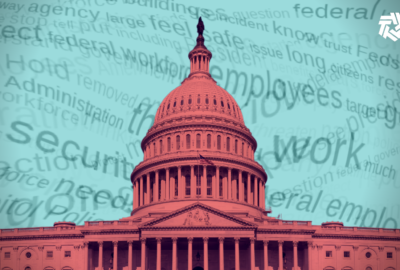
Swamp rats or Fauci’s folks: A new image for feds under Biden?
With a new administration in place, for better or worse depending on where you stand, the view of federal employees may shift after a rocky 4 years.
Joseph Biden is now POTUS of all the people — whether you voted for him or not — for the next four years. Maybe longer. Like it or not, that’s the deal.
But for federal workers, it’s a little more up close and personal. Statistically, each person regardless of rank, job title, agency or location will have several different political bosses over the next four years. As Cabinet officers, directors, administrators, attorneys generals or postmasters general come and go, so will the political operatives under them. Sometimes with the boss. Sometimes earlier. Almost always gone shortly after the new boss takes over.
The average life of a political appointee, according to one learned study, is about 18 months. Some say that’s about the right amount of time to master the job, bring in new blood, spirit and ideas, then move on to a — they hope — better paying job, maybe as a lobbyist. It is also just enough time to screw up lots of programs, missions and sometimes people before they are found out and have to move on.
Just looking at the vote, most people in the Washington D.C.-area (including most of Maryland and Virginia’s most affluent counties) voted blue. Trump yard signs were almost nonexistent in Bethesda, Arlington and other suburbs. But just 5 miles in any direction outside the beltway, Biden-Harris posters were rarer. That may be why President Trump promised to drain the swamp and move some of its resident, or “rats,” to places like the Midwest and the South.
The trick for feds — whether here or in the much more populous “real world” — is learning to survive/thrive, especially when times aren’t good. Like now. The stock market is going gangbusters, though many experts can’t understand why. The death toll from the pandemic has exceeded 400,000. While the nightly TV news is showing us photos of bold cabinet officers, senators, governors and county executives getting vaccines — presumably with their friends, spouses, kids and other chosen ones — the pitch is they are doing it for us. Setting an example so we won’t be afraid when in fact most people are simply afraid — once the pols have been protected — they might not get a shot until the mid-term elections. If then.
Presidents and their administrations come in two types: Washington insiders (like JFK, LBJ, Nixon, Ford, H.W. Bush) and outsiders ( like Ike, Carter, Clinton and definitely Trump). Good or bad, the insiders tend to understand how Washington and the bureaucracy works and how to work with it. The outsiders — Carter and Clinton in particular — are often stunned or turned off by Washington. Carter and Clinton (as former Governors of Georgia and Arkansas) were surprised at how much civil servants here were paid.
Insiders often try to “reform” the civil service while outsiders seek to bring it into line with reality. More often than not, their efforts fizzle or fade. But not always. Most recently Trump’s concept of a special cadre called Schedule F that could be quickly hired, fired, moved around and controlled minus the pesky civil service rules. Sometimes without doing harm, sometimes by sizzling some often innocent career officials and rank-and-file employees.
Will — four years from now or even sooner — feds be seen in the appreciative light that most view Dr. Anthony Fauci? Or will they remain, in many people’s minds, fire-proof time-servers who often don’t react properly or promptly, or are sometimes downright destructive when their political bosses — who represents POTUS — want to make changes?
Good intentions are nice. And the new team certainly seems to have them. The question for civil servants who have been to and survived previous rodeos is .. what’s next?
Any thoughts or comments from brand-new or been-there-done-that feds? Lots of inquiring minds would like to know!
Nearly Useless Factoid
By Alazar Moges
La-Z-Boy halted chair production in September of 1942 to make seats and backs for tanks, torpedo boats, turret guns and armored cars for World War II. Chair production resumed in 1946.
Source: Associated Press
Copyright © 2025 Federal News Network. All rights reserved. This website is not intended for users located within the European Economic Area.
Mike Causey is senior correspondent for Federal News Network and writes his daily Federal Report column on federal employees’ pay, benefits and retirement.
Follow @mcauseyWFED





